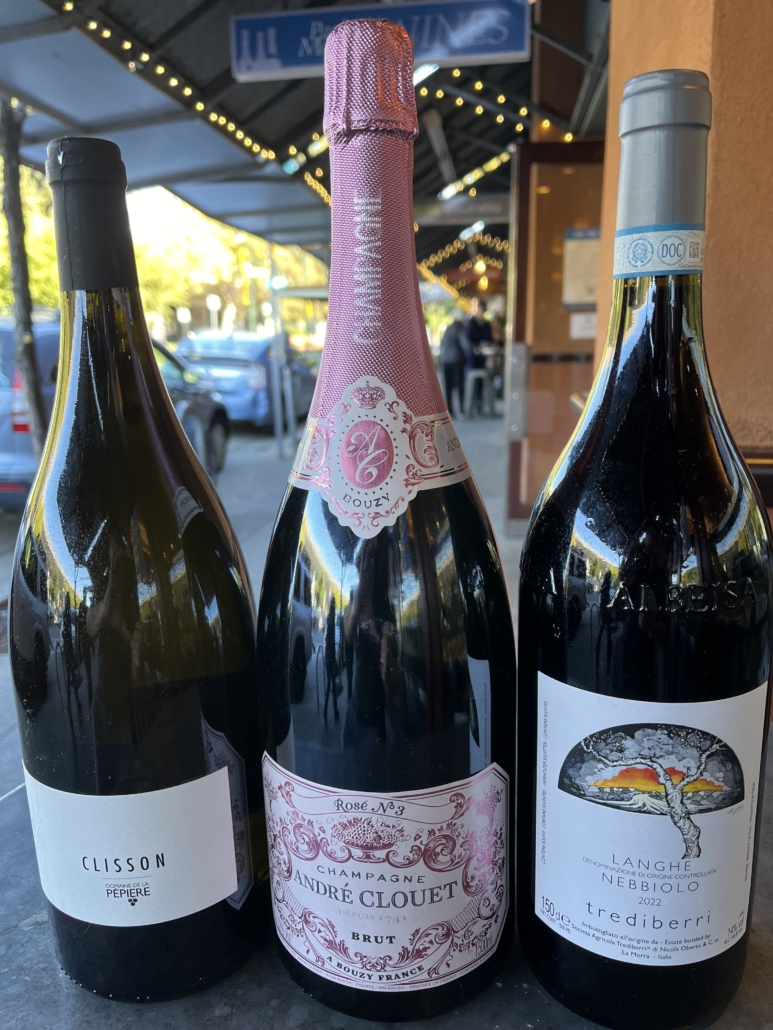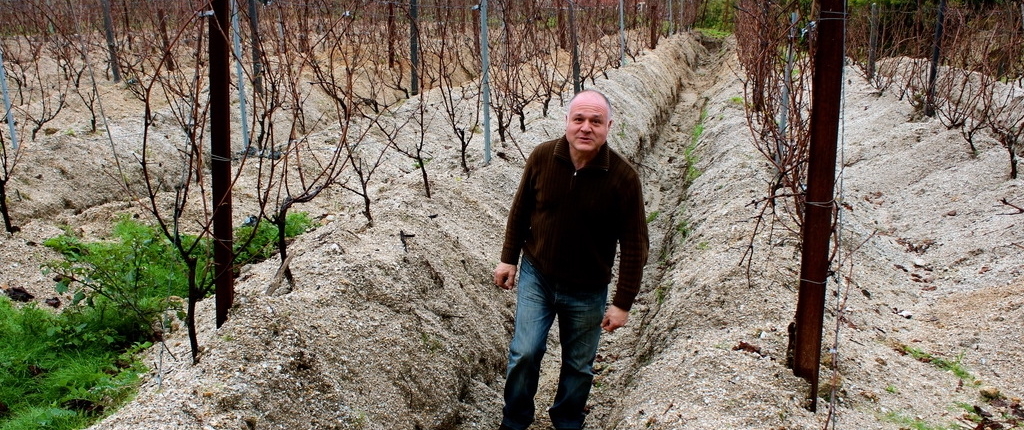At Paul Marcus Wines, it’s not uncommon to find customers looking longingly at our shelf of magnums. “If only I had a special occasion or a large party,” they say, to no one in particular. Well, the holiday season is the perfect opportunity to indulge your fantasies and crack open that big bottle.
We can go on about how magnums mature more gracefully than regular-sized bottles, how they can offer more harmony and complexity–especially when it comes to Champagne. But in the end, nothing shouts “party” like a large-format bottle of wine.
PMW stocks a wide range of magnums from which to choose. As an additional incentive, all of our large-format bottles are 15 percent off from now until the end of the year. Here are some of our favorite large-format selections to get you started.
 Bright Stripes
Bright Stripes
Great Champagne should give you weight and richness on the palate but do so with a spine of acid. The NV André Clouet – Brut Rosé No. 3 is always 100 percent pinot noir, typically with 6g/l dosage, which gives you the richness, but the fruit is grown on mostly chalky soils that give the wine a bright stripe of taught acid that propels the fruit down the palate. While the soils lend the wine some structure, the fermentation and aging in stainless steel keep it bright.
I have served this wine many, many times over the years and almost always serve it with the entrée, often pork. However, in a pinch, it sings with an omelet. This is the holiday magnum that goes with everything, and everyone needs a few magnums of great Champagne around for the holidays. Enjoy!
— Chad Arnold
A Rare and Special Treat
A special meal justifies a special bottle. The 2020 Chambeyron-Manin Côte Rôtie is an irresistibly perfumed and textured syrah that delivers immense “wow” while staying mystifyingly lifted on the palate and reasonable in its alcohol level. The seeming contradiction of ripe purple and black fruit with such freshness and lack of weight makes each sip a happy cognitive dissonance.
The Manin family farm one little acre of a very steep slope in a prized location; the farming and harvesting of grapes are all done by hand (as no tractors can navigate such a slope), and the wine is made in their home just steps from the vineyard. It’s a rare and special treat that would honor any table.
— David Gibson
Racy and Stony
Odinstal is the leading biodynamic producer in Germany’s Pfalz region. The MMXVIII Odinstal Sekt Brut Nature Riesling is disgorged by hand and bottled unfiltered and without any additions, including no dosage. The result: bone-dry, natural, Champagne-quality artisanal bubbles with riesling raciness and stoniness, at less than $100 for a magnum!
— Mark Middlebrook
Palate Dance
As you probably already know, we sell a lot of nebbiolo from the Langhe region in Italy’s Piedmont. My favorite right now is the 2022 Trediberri Langhe Nebbiolo. This slightly lighter wine is absolutely delightful, with clean, upbeat flavors that dance on your palate. It’s both refreshing and compelling.
— Paul Marcus
Lively and Lovely
Not to be confused with muscat (it is not sweet and not aromatic), Muscadet is made from the Melon de Bourgogne grape and comes from the Loire Valley near the Atlantic coast city of Nantes. The Pepiere Clisson is one of the greatest wines of the appellation. It exhibits the classic saline, tart-apple flavors and lively acidity that make Muscadet the perfect oyster wine. But the Clisson has a more viscous, richer texture that will make it work with a wide variety of foods. You can use as you would a Chablis or other unoaked white Burgundy.
Muscadet is one of the great wine values in the world. Even a top cuvée like this Clisson–we have both the 2019 and 2020 vintages–comes in at the very reasonable price of $67 for a magnum (1.5L) and $192 for a jeroboam (3L).
— Joel Mullennix
Earth and Spice and Everything Nice
Mencía makes me happy, especially when it’s Envinate’s village (Aldea) wine. Hailing from a variety of plots with different exposures, elevations, and soils, the 2021 Envinate Ribeira Sacra – Lousas Vinas de Aldea is made from about 90 percent mencía, with the remaining 10 percent composed of other indigenous varieties. Whole cluster, light maceration, and a mixed bag of vessels for élevage create a wine with lovely nuance of earth, spice, and fruit. Yum.
— Jason Seely
Apart from the Rest
We are tasting more and more ethereal and light nebbiolo in the shop these days as producers are prioritizing early accessibility for what is typically a highly tannic, needs-serious-meal-planning wine. No producer nails easy-drinking Barolo like Fernandino Principiano. His incorporation of whole-cluster fermentation and choice not to green harvest (remove leaves and unripe grape bunches) is pretty unheard of in the region, which sets him and his wine apart from the rest. His lower-alcohol, lighter-tannin approach means that this 2018 Ferdinando Principiano Barolo di Serralunga d’Alba can sit on the table with a wider range of foods–from anchovy and butter crostini to turkey to steak.
— Emilia Aiello

Luis Anxo Rodríguez Vázquez
Going Deep
Luis Anxo Rodríguez Vázquez has been producing wines in Spain’s Ribeiro region for more than 30 years, but over the last decade or so, he’s started to find the international acclaim he so richly deserves. His 2020 A Torna Dos Pasás Tinto is a seductive blend of brancellao, caiño and ferrol. It’s stylish and refined, bright and expressive, its red-berry lift buttressed by beguiling spice and mineral notes. And yet there is a smoky, brooding side that imbues the wine with great depth–serious and playful all at once, and quite versatile at the holiday table.
— Marc Greilsamer
